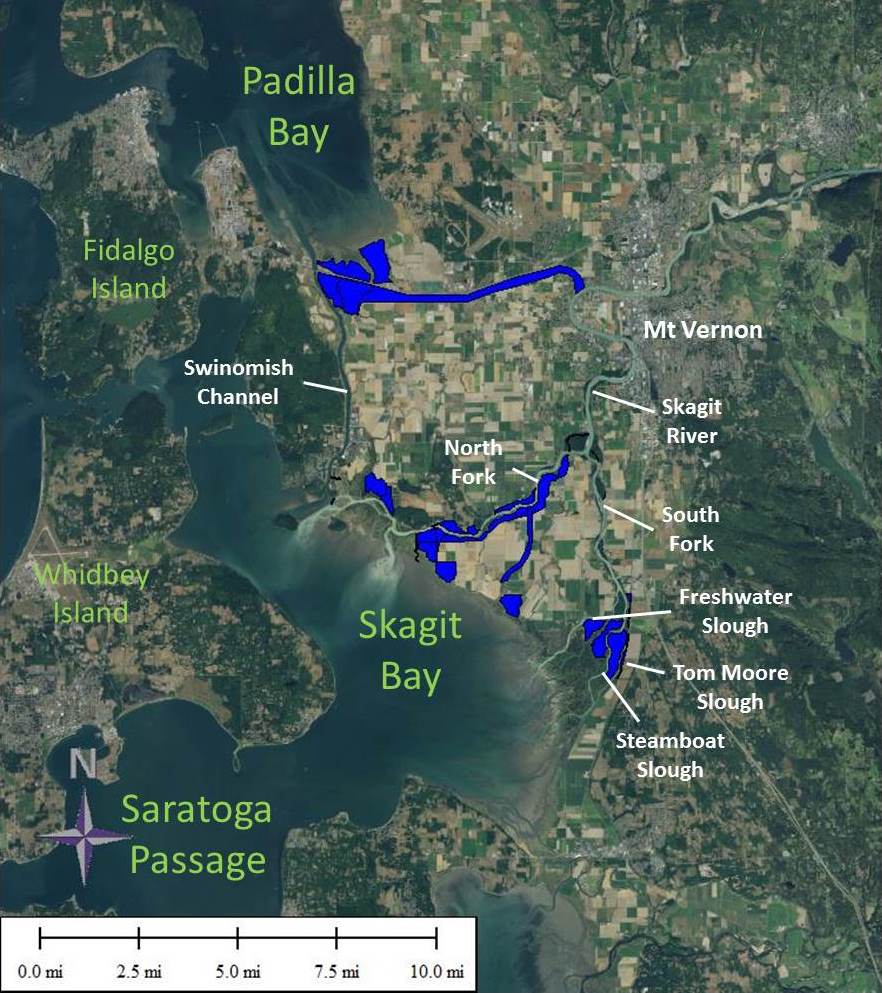SSM Habitat Restoration: Skagit Delta
Skagit Delta Hydrodynamic Modeling Project, Washington

The Skagit Hydrodynamic Model Project (SHDM Project) was initiated by the Farms, Fish, and Flood Initiative (3FI) to conduct a landscape-scale alternative analysis in the Skagit River delta region. The SHDM team comprised of The Nature Conservancy (TNC), the Washington Department of Fish and Wildlife (WDFW), National Oceanic and Atmospheric Administration (NOAA), and Pacific Northwest National Laboratory (PNNL). Researchers at PNNL developed a three-dimensional hydrodynamic model to assess the hydrodynamic response from 22 potential projects proposed throughout the region. Model results were fed into a larger analysis conducted by 3FI where projects were ranked for feasibility.
Results were based on a 7-month period from November 2014 through May 2015, which coincided with 12 stream gauge deployments and encompassed several 2-year floods and a fish outmigration period. Three types of projects were assessed: (1) dike setbacks or removals that allow the construction of new dikes built to a higher standard, (2) hydraulic projects that change the flow pattern by excavating new channels to distribute flow across the bay front, and (3) backwater channels where an existing channel within dikes is altered to increase backwater flow. Projects were grouped into 10 simulations so that the effects of each project would be isolated and quantifiable for comparison. Comparisons were made between restored conditions and validated existing conditions.

Project Highlights
- Model results were specifically catered to inform a detailed analysis that compared the performance of restoration projects on metrics related to providing juvenile chinook habitat, reducing flood risk, and reducing impacts to agriculture.
- Larger restoration sites were seen to alter the tidal prism and shift flow between the North Fork and South Fork.
- Restoration sites significantly impacted other restoration sites in the region, indicating the value of cumulative assessments when multiple restoration actions are planned.
- Two simulations included projected 2080 conditions including 0.57 cm of sea level rise and a hydrograph for moderate emissions scenario (A1B-IPCC), assessing the longevity of restoration actions.
Contacts and Project Team
- PNNL: Tarang Khangaonkar (PI), Taiping Wang, Jonathan Whiting
- TNC: Jenny Baker
- WDFW: Jennifer Friebel, Bob Barnard
- NOAA: Polly Hicks
Study Reports and Publications
Whiting J, T Wang, T Khangaonkar. 2017. Hydrodynamic Model Development and Application for Restoration Alternatives Assessment - Skagit Delta Hydrodynamic Modeling Project (SHDM). PNNL-26867, prepared for The Nature Conservancy by Pacific Northwest National Laboratory, Seattle, WA.